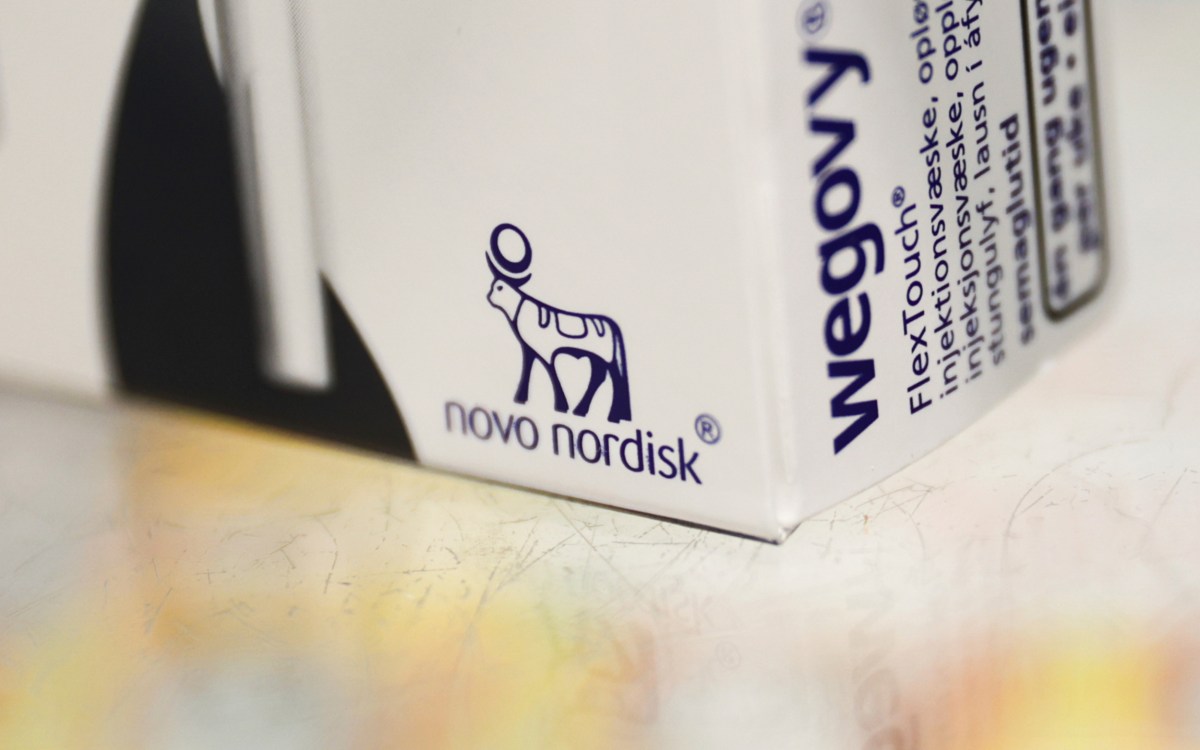Sophomore Convocation offers a glimpse of the future of Harvard engineering

R. Martin Chavez delivers the keynote speech. Photo courtesy of SEAS
The fifth annual Sophomore Convocation offered new concentrators of the Harvard John A. Paulson School of Engineering and Applied Sciences (SEAS) a sense of unity in the midst of a virtual world.
Held via Zoom, the program featured words of advice and encouragement for sophomores from a group of diverse and distinguished alumni, and concluded with a virtual tour of the new (and now partially occupied) Science and Engineering Complex led by Dean Frank Doyle.
In welcoming the SEAS Class of 2023, which is comprised of 292 students (21 percent of Harvard College sophomores), Doyle remarked on the diversity of this year’s group. Forty-five percent of new SEAS concentrators are women — far above the 22 percent national average for engineering schools, according to the American Society for Engineering Education. More than 23 percent are underrepresented minorities, also ahead of the 16.5 percent national average.
“We are committed to making SEAS an open and welcoming environment to all students,” said Doyle, who has made Diversity, Inclusion, and Belonging a school-wide priority.
Doyle’s introduction was followed by a keynote speech from R. Martin Chavez A.B. ’85, S.M. ’85, a biochemical sciences concentrator who concurrently earned a master’s degree in computer science, and serves as president of the Board of Overseers.
Chavez shared his unexpected journey from being a teenage computer nerd in Albuquerque, New Mexico, to attending Harvard and then medical school at Stanford University, to eventually serving as chief information officer at Goldman Sachs.
He advised the students to be open to different possibilities and explore the many opportunities Harvard offers, especially liberal arts courses outside their areas of focus.
“Harvard stretched me out way beyond anything I ever thought I would be — I thought I was just a computer geek — and that was what made all the difference. So I would implore you to take advantage of that,” he said.
That sentiment was echoed by a panel of alumni who emphasized the experiences that enriched their educations and helped set them on paths for success in their careers.
For Linsey Marr ’96, an engineering sciences concentrator who is the Charles P. Lunsford Professor of Civil and Environmental Engineering at Virginia Tech, the breadth of her engineering education has been invaluable. She recalled redesigning a dorm room lamp to work with a fluorescent light bulb as a senior project, and how that experience inspired curiosity that she draws upon in her research on the release, transformation, fate, and toxicity of nanomaterials in the atmosphere.
“That seemed like an obvious thing to do, but hadn’t been done,” she said. “And that was something I carried with me throughout my career, problems that seem to be obvious, like transmission of disease, but haven’t been looked at from a fundamental perspective.”
The community at SEAS, and especially time spent collaborating with peers during office hours, was important for Alisa Luu ’15, a computer science concentrator who is senior engineering lead at Nava. She remains in touch with friends she made through Women in Computer Science.
“Conversations with other students about big ideas was such a great part of college, and it is something that you don’t really get outside. Everybody in my blocking group came from a different concentration, so we had a wide range of different perspectives,” she said. “Being at Harvard gave us this hope that we could change the world. I still think about that.”
Morgan Pope ’11, an engineering sciences concentrator who works as a research scientist at Disney, encouraged the sophomores to join a SEAS lab to build up technical skills and experience cutting-edge science firsthand. The School will offer a virtual research showcase on Feb. 11 for undergraduates to learn from faculty, postdocs, and grad students about opportunities to work in SEAS labs.
“They are doing so much fun stuff, and aside from the quality of the research, that is a way for you to get a taste of what engineering is like,” Pope said. “You won’t get that from your classes in the same way.”
The panelists also discussed the importance of increasing diversity, at SEAS and in their own industries.
Kayla Shelton ’13, a mechanical engineering concentrator who works as construction manager for the City of Detroit, reflected on the anxiety she felt after the Boston Marathon bombing. As a Black woman, she was afraid to leave her dorm room while the police manhunt was unfolding for fear she would be targeted because of her race.
The University and U.S. society still have a lot of work to do, Shelton said, but she has been encouraged to see the climate start to shift as more people become aware of implicit bias and systemic racism, and demand change.
“It has been really nice to see colleagues being really aware of their privilege and being able to reach out to see how they can help. I’ve seen how people have really come together at a time like this, and how different it has been since I was in undergrad,” she said.
For Ben Zauzmer ’15, an applied math concentrator who is director of baseball analytics at the New York Mets, issues of diversity, inclusion, and belonging are top-of-mind as the looks to grow his analytical team. Zauzmer advised students to be aware of how they can play an active role in fighting systemic racism as leaders at companies and institutions.
“With the blessing of a Harvard degree, you are going to be in positions of hiring and promoting as you move through your careers,” he said. “Take these issues very seriously and think very hard about them. It is not everyone in this world who is fortunate enough to be able to make a difference. It is something to take as a serious responsibility because it is the right thing to do.”
After the panel had a chance to reflect on their past experiences, Doyle showed alumni and students alike what the future of the SEAS student experience will look like as he gave a guided tour of the Science and Engineering Complex.
He reflected on the sheer size of the building, and the many opportunities it provides for collaboration and hands-on learning, as he made stops in atriums, classrooms, engineering labs, makerspaces, and a cafeteria. As he walked through the building, the Zoom chat buzzed with excitement, and smiley face emojis, as students shared their thoughts on the shiny, new space.
“We’re going to be very excited to have you join us when it is safe to do so. I look forward to welcoming you to the SEAS family,” Doyle said.




